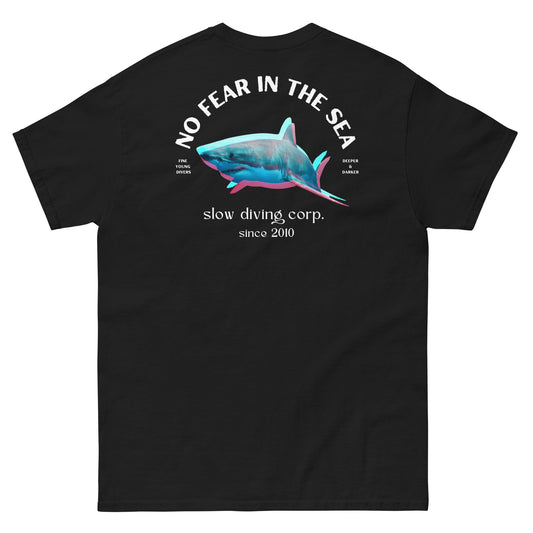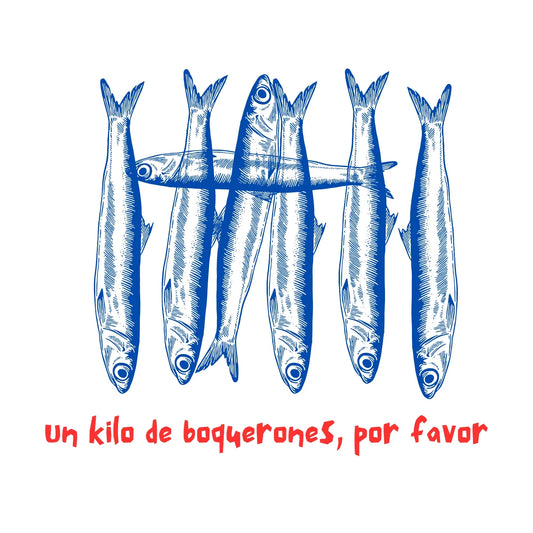It is very common to confuse the Portuguese Man O' War (Physalia physalis) with jellyfish... but it is not a jellyfish and not even a single creature... it is several. Portuguese man-of-wars are siphonophores, a colony of organisms that join together to survive. Each of these organisms, called zooids, is specialised in an activity necessary for the survival of the colony. All of these organisms are interconnected and physiologically integrated, unable to survive independently.
Before we continue, did you know that we design T-shirts and hoodies for ocean lovers like you? They are of the highest quality, and we ship worldwide!
What is a Portuguese Man O' War?
The Portuguese Man O' War takes its common name from the upper polyp, a kind of gas-filled bladder that can protrude up to 15 centimetres from the surface of the water and somewhat resembles a 16th-century Portuguese warship. These organisms are responsible for navigation. The long, slender tentacles, which can reach up to 50 metres in length, are covered with poisonous nematocysts that paralyse and kill the fish and other small creatures they feed on. The fourth member of the colony is responsible for reproduction
For humans, the sting of a Portuguese man-of-war is very painful, but rarely fatal, and the pain disappears after a few hours. Be very careful if you find one in the sea or dead on the shore, even if it is dead its venom is active and can do a lot of damage.

Portuguese Man O' War. Image by Olaf Gradin
Portuguese Man O' War can sometimes be found in large groups of up to 1,000 individuals, especially in warm waters. These colonies drift as they have no means of propulsion and are driven by currents or wind.
To avoid surface threats, Portuguese-man-of-war can deflate their sails and dive briefly until the danger passes. Predators of these colonies include loggerhead and leatherback turtles and sunfish. All are immune to the poisonous tentacles of the caravel thanks to the thickness of their skin. The Glaucus atlanticus, or blue dragon, is an incredible nudibranch that also feeds on Portuguese Man O' War, adopting their blue colour and venom, which makes it easier for other predators to ignore it, sensing its toxicity.
Portuguese Man O' War are most commonly found in the tropical and subtropical regions of the Pacific and Indian Oceans and the North Atlantic. Although usually found in the open ocean, they can also be seen in the Mediterranean Sea.
Another fact about the Portuguese dogfish is that it is sometimes accompanied by a small fish, Nomeus gronovii, known as the Portuguese Man O' War fish, which is partially immune to the venom of the stinging cells... but only of the smaller tentacles, and can die if it touches the larger tentacles, which contain more venom. So it lives and feeds on the smaller tentacles of its host's swim bladder. It has a clownfish-like mucus that prevents it from being stung by anemones.
What to do if you get stung by a Portuguese Man O' War
If you have been stung by a Portuguese man-of-war, the first thing you should do is try to carefully remove any tentacle remains that may be on your skin and immediately apply salt water, never fresh water. Then wash the area with hot water for a quarter of an hour, which will relieve the pain of the sting.
If you have been stung by a Portuguese caravel, follow these steps in order. You will immediately realise that you have been stung by the caravel, so you are still on the beach or in the water. Get out of the water and follow these steps.
-
Stay calm: It is important not to panic so as not to increase blood flow and make the situation worse by spreading the poison around your body more quickly.
-
Remove the tentacles: As mentioned above, if you have fragments of Portuguese man-of-war stuck to your skin, remove them carefully with a flat object. A shell, a wooden stick or a credit card will help. It is important not to rub or scratch the affected area.
-
Rinse area with salt water: Wash the affected area with salt water, NEVER FRESH WATER, lukewarm if possible, to help dissolve the toxins and reduce itching.
-
Use a baking soda solution: I know no one takes baking soda to the beach, but if you can go to a bar and get some, it will help a lot. It will help neutralise the venom and reduce itching.
-
Take an antihistamine: Antihistamines can help reduce itching and inflammation.
-
Seek medical attention: If itching is severe or there are signs of infection, seek medical attention as soon as possible.
Vinegar is not recommended as it can be very good with some Portuguese Man-of-war species... but harmful with others. So if you have baking soda, it is better than vinegar.





















